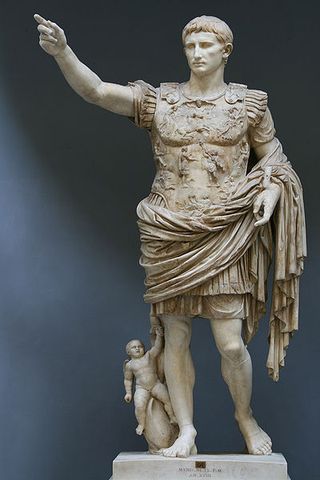
It is traditionally held that Mark wrote his gospel based on information he learned from St. Peter, after having been his travelling companion.
Where does this claim come from?
And would it surprise you to know that we have a first century source that claims precisely this?
Here’s the story . . .
What We Know About Mark
We know that Mark was a travelling companion of Peter, because Peter mentions the fact in his First Epistle (1 Peter 5:13).
We also know that Mark was a travelling companion of other apostles, including Paul and Barnabas, which Luke discussed in Acts.
Mark may have even been an eyewitness of part of Jesus’ earthly ministry. It is often thought that he refers to himself, anonymously, in his own gospel, as the man carrying a jug of water on his head or as the man who slips out of his clothes and runs away naked on the night Jesus is arrested.
Also, as Luke mentions in Acts, Mark’s mother was prominent in the early Christian community, which at times met at their house in Jerusalem.
So why would we suppose that Mark got the information from St. Peter in particular?
The Origin of the Claim
The claim is found today in the writings of Eusebius of Caesarea, the so-called “father of Church history.” Specifically, it’s found in his multi-book set Church History (a.k.a. Ecclesiastical History).
Eusebius wrote this work just before the First Council of Nicaea (A.D. 325). He finished it about A.D. 324.
The claim concerning Mark’s Gospel is earlier than that, though, because in the relevant passage of Church History, Eusebius is quoting an earlier writer, named Papias.
Who?
We don’t know as much about Papias as we’d like. He was a second century figure who served as the bishop of Hierapolis. This was a town in modern Turkey that is near Laodicea and–a bit more distantly–Ephesus and the other “seven churches of Asia” mentioned in Revelation.
Papias is known for having conducted a series of interviews with people who knew Jesus and his immediate disciples, thinking he could learn more by doing so than just by reading books alone.
He recorded his thoughts in a multi-volume work called Interpretations of the Sayings of the Lord.
This work is now lost, but parts of it survive in quotations in other authors, including Eusebius.
For our purposes, a key point is when he wrote: He is thought to have written the Interpretations of the Sayings of the Lord around A.D. 120-130 (or even earlier).
That carries our tradition about Mark’s connection to Peter back to the early second century.
But we can carry it back further than that, because Papias was basing his book on earlier traditions, and in this case he names his source for this tradition.
The Presbyter?
Here is the relevant passage from Eusebius’s Church History. I’ve labelled who is speaking to make the source of particular words more obvious.
[Eusebius:] But now we must add to the words of his which we have already quoted the tradition which he [that is, Papias] gives in regard to Mark, the author of the Gospel.
[Papias:] “This also the presbyter said:
[The Presbyter:] ‘Mark, having become the interpreter of Peter, wrote down accurately, though not in order, whatsoever he remembered of the things said or done by Christ. For he neither heard the Lord nor followed him, but afterward, as I said, he followed Peter, who adapted his teaching to the needs of his hearers, but with no intention of giving a connected account of the Lord’s discourses, so that Mark committed no error while he thus wrote some things as he remembered them. For he was careful of one thing, not to omit any of the things which he had heard, and not to state any of them falsely.'”
[Eusebius:] These things are related by Papias concerning Mark [Church History 3:39:14-15].
So Eusebius is quoting Papias, and Papias is quoting a figure called “the Presbyter.”
Who is that?
Meet the Presbyter
“The Presbyter” is identified by Eusebius in the sentence immediately before the ones we quoted, where Eusebius writes:
Papias gives also in his own work other accounts of the words of the Lord on the authority of Aristion, who was mentioned above, and traditions as handed down by the presbyter John, to which we refer those who are fond of learning.
This individual–known as “John the Presbyter” or “John the Elder” (the Greek word presbuteros can be translated both ways)–is identified by Papias as a disciple of Jesus who was apparently distinct from John the Apostle.
Here Papias identifies John the Presbyter as a disciple of the Lord distinct from the previously-mentioned apostles, including John the Apostle.
Into the First Century
As we noted, Papias is writing c. A.D. 120-130 (or earlier), but he’s quoting the earlier source John the Presbyter.
That pushes the date of the tradition regarding the origin of Mark’s Gospel into the first century.
Remember: John the Presbyter is identified by Papias as one of “the disciples of the Lord,” which is why he was interested in interviewing him to find out what he said about Jesus’ teachings.
He and Aristion were, apparently, people who knew Jesus but who didn’t end up being appointed as apostles. They were, however, companions of apostles, just as Mark and Luke were.
And so it’s not surprising that John the Presbyter–a contemporary of St. Mark, one who lived at the same time Mark wrote his gospel–would have information about how Mark’s Gospel came to be.
In any event, we’re dealing with a first century tradition regarding the origin of Mark’s Gospel.
And maybe something even more than that.
Stay tuned for our next post.







